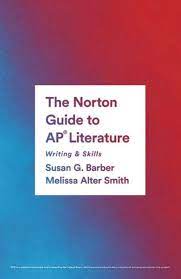Fences. The Importance of Being Earnest. A Doll House. A Raisin in the Sun. Trifles. Antigone. Short plays can pack a powerful punch. I love the possibilities and teaching points that plays provide. A play offers so many opportunities for interaction as students can read and act out scenes which easily leads to lessons about, tone, setting, and characterization. The division of acts and scenes make for easy discussions about structure. This post is going to focus on and provide resources for the play Fences, but these ideas and strategies work for any drama. Cindy Dixon and I collaborated on this unit but approach it differently. I’ll share my approach then Cindy Dixon will share hers.
One thing we discuss up front is that plays are written to be performed – not read. This is something we keep in mind the entire time considering and analyzing stage directions. Because plays are performed, they tend to be built around dialogue and action which without a narrator to provide further context, give us room to read between the lines and explore motivation (even though sometimes we are gifted with a monologue or aside to help). And like novels, there is plenty of room for interpretation which can be seen through different clips of the same scene. We do not read this entire play aloud in class. I know this is common practice for plays, but because of the time of year (students are able to handle more on their own), the time it takes to read (I would rather spend our time discussing), and language in the play (more on this later), students read individually or some may choose to read in small groups.
I do not spend a lot of time front-loading texts but instead prefer students to jump in and start reading. We deal with things that one might front load as they come up. To introduce Fences, we first spend time responding to and discussing the epigraph for Fences:

I typically read Lloyd Richards’ Introduction and have students read a bio and cultural context of the play that’s in our class textbook. I draw attention to August Wilson’s Century Cycle and the different awards the plays have won. Finally, we must have a discussion about language – esp the N word – in Fences. “The Meanings of a Word” by Gloria Naylor from the New York Times is a good resource that provides context for our conversation. This word is not said or read aloud in our class even though we do watch clips of the play that include this word. The only other thing I do before we start reading is show the Pittsburgh Project so students will have a visual context of the setting.
I struggle – drama or a novel – with how much students should read and how much we should stop and discuss. When I survey students each year, they always appreciate the ability to read through a text as opposed to stopping and starting because they are able to lose themselves in the story. This is one reason I gave up having students annotate novels or longer texts: the work of annotation slowed them down so much that they did not enjoy the reading. And while we do need to close read some passages, I want them to get lost in stories. The goal is two-fold: acquire skills for understanding literature AND love literature. With Fences, I try to hit a happy medium and divide the reading into two parts – Act I and Act II; this seems like a logical place to break and unpack what we’ve read yet allows students to read a larger chunk at once.
ACT I Plan:
We spend time in class reading a few parts of the play that are not character dialogue because I want to emphasize that a lot of information can be gleaned from these. There’s so much we learn about Troy and Rose before they even speak a word. Here are a few we spend time discussing:



After reading Act I, scene i, we will do a quick check in at the beginning of the next class with a couple of reminders that characters are complex, thus we need to describe them as dimensional and consider their motivations. Here are some reminders we go over before discussing character:


We also watch this video (highly recommend) from Inside the Screenplay which serves as a mini-lesson on symbolism so students have a frame of reference for thinking about the fence, baseball, Blue, etc.
After students have read Act I, students unpack in their small groups before we have class discussion. We also watch a few video clips from Act I during our whole group discussion. For a quick and easy discussion guide, I had students take a sheet of paper (one per group of four), divide it into four squares, then take notes on each scene as they discussed.



We also spend a chunk of time reading and annotating the scene where Troy recounts fighting death. I set the timer for 12 minutes for students to read and mark with this as a guide:

Students will then discuss in small groups before a whole class discussion. Only then will I weigh in with insights from my close reading. Discussions on this close read and rich and thoughtful.
This is my basic approach for Act I. (Class slide decks which include video clips: Day 1, Day 2, Day 3) Next week I’ll share Act II resources and daily lay out for Act II. But enough for me: here’s a a different approach from Cindy Dixon:
Before starting Fences, I provide my students a reading guide with background information that includes the context of the play. I also want students to know about the significance of August Wilson and his contribution to American theater. Knowing that Fences is a work among nine others that make up The Century Cycle opens the door to exploring the Black experience in America. I want students to read the play unencumbered by laborious notes or tasks, but I do want them to trace a limited number of topics they will notice as they read. (Baseball, death, jobs, the blues, etc) Students are quick to see that Troy uses the metaphor of baseball to make sense of his life while the topic of jobs is one that sparks a central conflict between Troy and his son. They are also intrigued by his mysterious and somewhat magical bouts with Death. The scenes and lines that students mark will serve as a launching point for conversations and give them points in the play to which they can refer when we discuss the final scenes and the whole meaning of the work. Students are quick to see that Troy uses the metaphor of baseball to make sense of his life. They are also intrigued by his mysterious and somewhat magical bouts with Death.
After students read the entire play, we focus on four main characters to take a deeper dive into the many meanings of the play by focusing on 4-5 passages or scenes. However, the first question my students always ask is about the final scene where Gabe blows his horn and the gates of heaven open, so we talk about the possibilities of how it would be staged before watching a clip of the movie version. Fences is a short work that enables us to discuss the impact and significance of small scenes on the course of the whole work, so I don’t mind discussing the end first. Students can then trace the complex journey of Troy’s transgressions and his redemption- a journey that speaks to the many messages August Wilson has woven into this masterful work.

I want my students to approach the whole meaning of the play through character analysis so we look at relationships between various members of the Maxon family by examining the following scenes in Act 2. Focusing on the later scenes gives students an opportunity to discuss and process how each relationship has developed to this point. This somewhat backward approach works well as students refer to previous scenes and details that contribute to each character’s development. When students close read this scene (Troy and Rose’s Metaphors) from Act II Scene i they recount how Troy and Rose have come to this point. Students focus on the meaning of key lines. What does Troy mean when he says “I fooled them, Rose. I bunted.” By looking back at the scenes from Act I, students trace how Troy’s societal struggles in his early life helped to shape his outlook and his approach to dealing with his own son. In the final scene where Cory struggles to come to terms with his strained relationship with his father (Rose and Cory before Troy’s Funeral) students learn of Rose’s journey to accepting the choices she has made in life. Students can refer back to the earlier conflicts between father and son as Cory tries to rid himself of the “shadow” that has haunted him. And finally, as Raynell and Cory sing the song from Troy’s father that has been passed down through the generations, students can trace the meaning behind the motif of singing the blues from the beginning by exploring Rose’s song “Jesus Build Me a Fence” to the various scenes where Troy sings “Old Blue.” I want students to see the parallels between Old Blue in the song and Troy Maxson in the play. More information about Old Blue can be found on this website. Students also realize that Fences is a coming of age story for Cory and he comes to terms with how his father loved and raised him.
We end our study by generating thematic statements that reflect the many messages and meanings in the play. I give students a list of main subjects to start and have students check the ones that apply. Students then work in groups to generate their statements. I am always pleased when my students see how Fences is a play about fathers and sons, forgiveness, redemption, and the hardships of black families in mid-century America. Additional works to pair with Fences
Poetry Analysis Assignment for MyPapa’s Waltz and Those Winter Sundays
Link to 10 clips from 2016 Fences movie:

Cindy Dixon lives on Isle of Hope in coastal Georgia and teaches AP Lit and American and British Literature in room 513 at Richmond Hill High School. She was the coordinator for EdCamp Savannah and has served as department chair, as a NMSI consultant, and attended the 2019 Folger Summer Academy in Washington DC.

Susan Barber teaches AP Lit at Midtown High School in Atlanta, Georgia. Susan also serves at the AP Lit College Board Advisor. In addition to reading, writing, and investing in the next generation, she loves watching college football with her family especially when Alabama is playing.













2 comments
Kathy
As usual, Susan, you inspire me to be better. Thank you for this.
Nikki Woronka
Thanks so much for sharing, Susan. I haven’t taught ‘Fences’, but I’d love to. We do read ‘Pipeline’ by Dominique Morisseau and explore the complexity of the father-son relationship. I really appreciated the video exploring symbols/motifs/themes in ‘Parasite’ – and made copies (with full credit to you!) of those amazing slide shows (Day 1, 2, and 3) to adapt for ‘Pipeline’. Thanks again for the pointed, purposeful work you do with your students!